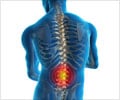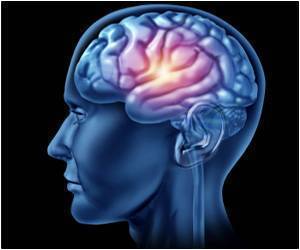Nerve injuries lead to impaired functioning of the nerve. Analgesics, anti-inflammatory agents, anticonvulsants and antidepressants provide limited relief.
Recently, neuroprotective pharmacologic factors such as L-carnitine and N-acetylcysteine have shown good results in treating nerve injuries. Surgical repair of injured nerves can also be done. There is still scope for better and effective ways to restore functioning of nerves.Nerve injury is the commonest type of trauma sustained by nervous system and it is accountable for neuronal death.
Nerve damage can occur due to penetrating traumas (stab wounds, surgical incisions, lacerations, etc), crush trauma (fractures, compartment syndrome, hematomas, etc.) and stretch injury.
Loss of functionality, efficiency to recover and nerve component affected are important factors in the classification of nerve injury.
Generally, two grading systems are used in nerve injury:
I. Seddon’s system - In this classification, three tiered model consisting of neurapraxia, axonotmesis, and neurotmesis is taken into account for classifying nerve injuries.
Axonotmesis, a severe form of nerve injury, is characterized by disruption of both myelin sheath and axons. It results in Wallerian degeneration, a process whereby ‘the part of the axon that is separated from the neuronal cell body disintegrates distal to the injury.’ Axonotmesisis seen in displaced bone fractures and crush injuries.
II. Sunderland’s system - In this classification, the last stage of Seddon’s classification is further sub-divided into three sub categories. The first subcategory is the same as the last one in Seddon’s system. In the second subcategory or the fourth degree injury, both endoneurium and perineurium are injured and only the epineurium remain intact. Surgical repair is required here. In the last subcategory or the fifth degree injury, the lesion is a complete transaction of the nerve. Recovery requires appropriate surgical treatment.
The damaged nerves do not repair themselves instead ‘intact areas take over the function of the damaged areas in a process known as plasticity.’
The process of nerve regeneration depends upon the type and nature of injury sustained.
Improving the quality of life, restoring the normal functioning of injured nerves, and mitigating nerve pain and discomfort are the chief goals behind the effective treatment of nerve injuries. Both endogenous and exogenous sources of injury are to be treated.
Nerve pain is characterized by severe burning sensation and dysesthesia.
Antidepressants and antiepileptics provide longer-acting effects. Narcotics are given for more aggressive and severe forms of pain.
A number of pain relieving agents are used for curing nerve pain such as analgesics, anesthetics, antidepressants and anticonvulsants
Analgesics: They provide immediate but short term pain relief benefits. Analgesics such as nonsteroidal anti-inflammatory drugs, opioids and tramadol show poor response in nerve pain therapy.
Anesthetics: Topical agents and anesthetics also provide relief in pain caused by damaged nerves.
Antidepressants: Antidepressants such as tricyclic antidepressants (TCAs), serotonin-norepinephrine reuptake inhibitors (SNRIs) and selective serotonin reuptake inhibitors (SSRIs) are efficient in mitigating pain associated with nerve injuries.
Side effects such as urinary retention, dry mouths, constipation, hypotension and dizziness are seen with antidepressants.
Anticonvulsants: Owing to the similarity between functional changes of injury in neuropathy and epilepsy, anticonvulsants are used in treating nerve pain.
Anticonvulsants such as carbazepine and phenytoin are sodium channel blocker and have protective abilities against neuropathic pain and seizures. Carbamazepine, though, is more effective in reducing pain as compared with phenytoin.
Antiepileptics: Antiepileptics such as lamotrigine, gabapentin, and oxcarbazepineare are also used in the management of nerve pain. ‘Gabapentin and pregabalin are particularly useful for neuropathic pain in patients with a history of cardiovascular disorders, glaucoma, or urinary retention.’
According to Cochrane review, lacosamide offers very little or no benefits in mitigating neuropathic pain.
Besides the pharmacologic management of pain, there are some nonpharmacologic therapies that have proved effective in reducing pain.
Transcutaneous electrical nerve stimulation is one such type of nonpharmacologic therapy that has shown promising results in managing nerve pain. In some patients, the endoneurial edema related with peripheral nerve damage can be treated with steroids and antivirals.
The chief focus of management of nerve injuries is neuroprotection.
Recently neuroprotective drugs such as L-carnitine and N-acetylcysteine (NAC) have attracted scientists. Both theses agents have antioxidant properties and are effective and safe in their usage.
The management of nerve pain involves surgical intervention as well.
The significance of surgical treatment lies in the fact that it is useful in repairing damaged nerves, increasing the proportion of regenerating axons, and maximizing the number of regenerating axons.
The best surgical technique to allow the maximum number of axon regeneration is based on the following factors –
• extent of nerve damage,
• the nerve’s functional viability and location,
• patient’s age and medical conditions,
• whether surgery can restore functional ability to some extent with surgery, and,
• whether benefits outweigh risk, costs, and loss of productivity.
Further research is required regarding associated symptoms and underlying cause of pain in order to improve pain control in nerve injuries.
The author of the review, Kiran Panesar, focused on the need to enhance the regeneration of injured axons. However Kiran said that despite the significant advancement in surgical techniques, the functional outcome of nerve injuries still remains inappropriate.
Reference:
Management of Nerve Injuries; Kiran Panesar et al; US Pharmacist
Source-Medindia











